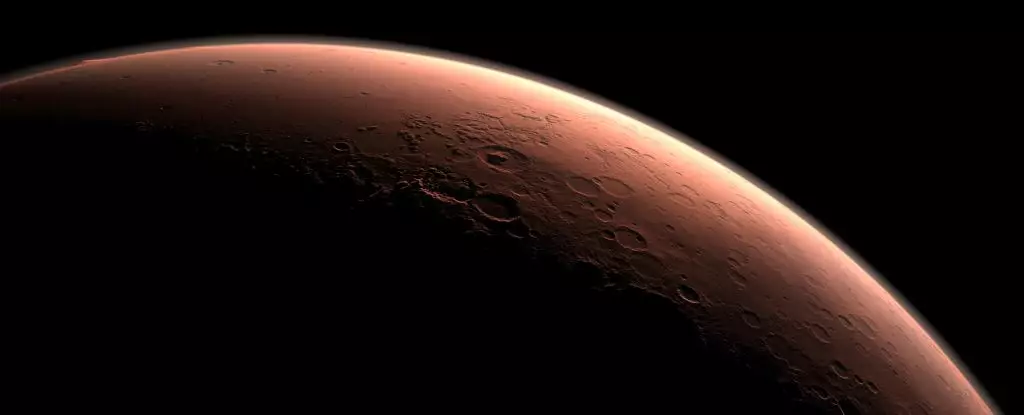The quest to uncover life beyond Earth has taken humanity on an odyssey through space, with Mars standing as one of the most promising candidates. Despite numerous expeditions and advanced technologies, no definitive evidence of life on Mars has been unearthed. However, an intriguing consideration emerges from the Viking missions of the 1970s, when the first U.S. spacecraft successfully landed on the Martian surface. The missions aimed to conduct a series of experiments to detect biosignatures—molecules indicative of life—within Martian soil. Yet, over the decades, doubts have surfaced, suggesting that our methods may have inadvertently obliterated the very signs we sought.
Launched in 1975, the Viking 1 and Viking 2 landers were the vanguard of U.S. robotic exploration of Mars. Both equipped with sophisticated instruments aimed at analyzing the Martian environment, they were tasked with determining whether life ever existed on the planet. Among the most notable experiments were the Gas Chromatograph-Mass Spectrometer (GCMS) and the labeled release experiment. The GCMS detected chlorinated organics in Martian soil, which was initially dismissed as contamination from terrestrial sources. In recent times, however, scientists have begun to reconsider that interpretation, recognizing that such organic compounds might be inherent to Mars itself. Still, the question remains: are these compounds products of biological activity or simply chemical processes of a desolate planet?
Astrobiologist Dirk Schulze-Makuch from the Technical University of Berlin posits that the design of the Viking experiments could have undermined their own objectives. His reflection sheds light on a critical aspect of Martian exploration: the need to consider the environmental context and adaptability of potential Martian life forms. The Viking landers employed methods that involved heating and infusing Martian soil with liquids, potentially incinerating or overwhelming any microorganisms that might have been present in a dry-adapted state. The supposition that Martian life, if it existed, would resemble life on Earth, could have been fundamentally flawed.
Schulze-Makuch likens this to a scenario in which a person in dire need of water is mistakenly transported to the ocean rather than given just enough hydration to survive. Such drastic changes in conditions would likely prove fatal rather than beneficial. This analogy underscores a significant oversight in our quest for extraterrestrial life: underestimating the adaptability of organisms to their respective environments, especially on a planet as arid as Mars.
Viking’s results presented a mixed yet intriguing landscape. While one experiment indicated a positive signal for metabolic activity, the concurrent null results from the gas exchange analysis left scientists puzzled. Schulze-Makuch suggests a radical reevaluation of these findings, emphasizing that the seemingly contradictory results may hold vital clues about Martian life. Curiously, the pyrolytic release experiment yielded stronger signals when performed under dry conditions, hinting that Martian organisms, if they exist, may possess unique adaptations which mimic Earth’s extremophiles—organisms that flourish in extreme environments.
Such reconsiderations compel the scientific community to take a closer look at these original Viking results. What if the signs of life that we hastily dismissed were, in fact, legitimate indicators of Martian biology? This notion harkens back to Schulze-Makuch’s earlier proposals regarding dry-adapted microbial life that could potentially utilize hydrogen peroxide as a bioprotective agent.
As we stand on the precipice of a new wave of Martian exploration, the lessons learned from the Viking missions cannot be overstated. Going forward, it is imperative that missions dedicated to astrobiology are meticulously designed with the unique ecological and environmental conditions of Mars in mind. This might entail deploying instruments that can better preserve samples without destroying the delicate signatures of potential life. A future mission should prioritize the investigation of dry-adapted organisms that thrive in the absence of abundant liquid water—a crucial aspect we may have overlooked in our earlier ambitions.
As we reexamine our historical efforts on Mars, we might just uncover evidence that could reshape our understanding of life beyond Earth. It’s a tantalizing prospect that may well redefine our quest for extraterrestrial biology, balancing ambition with a newfound appreciation for the resilience of life in extreme conditions. The search for life on Mars is far from over; rather, it is an evolving journey that beckons further inquiry and innovation.


Leave a Reply